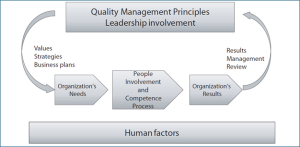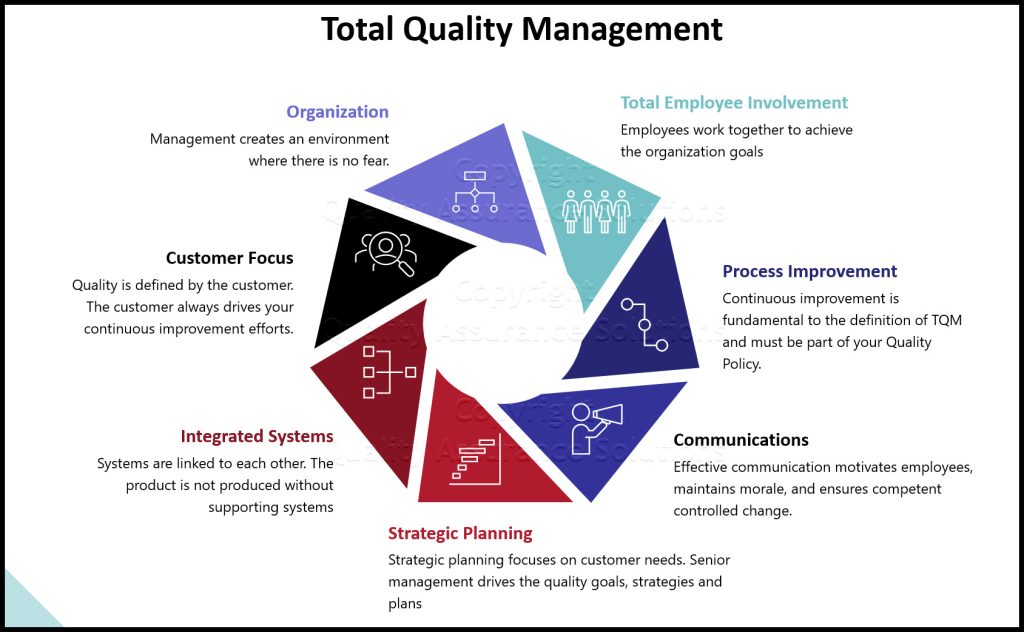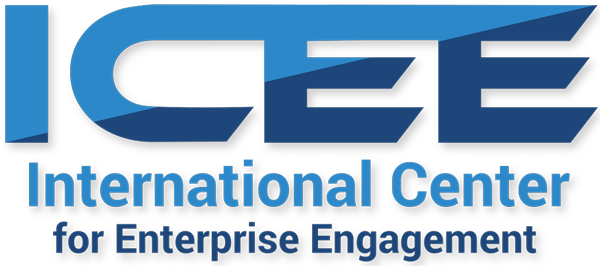Total Quality Management for People
How to use proven total quality management practices to enhance external and internal customer service while encouraging continuous efforts to enhance efficiency, lower costs, and enhance cash flow through faster cycle times.
Most organizations today face two imperatives: the need to enhance or at least maintain customer satisfaction while finding ways to improve efficiency, lower costs, accelerate cash flow, or enhance revenues by finding new ways to create value. Total Quality Management for People uses principles long proven in manufacturing to engage and involve all relevant stakeholders in a continuous improvement process that authentically rewards teams or individuals for meaningful contributions.
efficiency, lower costs, accelerate cash flow, or enhance revenues by finding new ways to create value. Total Quality Management for People uses principles long proven in manufacturing to engage and involve all relevant stakeholders in a continuous improvement process that authentically rewards teams or individuals for meaningful contributions.
Want to get everybody on your team or in your organization excited the mission? Involve them in the same processes proven to work in the world of total quality management in manufacturing: gainsharing—engaging all relevant stakeholders involved in the process of continuously improving external and internal customer satisfaction by giving them voice, training and reinforcement, ongoing communications, a culture of appreciation and recognition, and concrete customer-centric goals designed to have a measurable impact on the organization’s purpose, goals, and objectives.
ICEE brings the proven processes of total quality management to service industries and related employees to create a culture of continuous improvement in external and internal customer satisfaction, cost and process efficiency, new products and services or other sources of value creation or risk mitigation efforts. These principles are already followed at over 1.3 million companies worldwide estimated to have received certification in ISO 9001 quality management standards of which ISO 10018 is an extension focused on service companies. Low cost enterprise engagement technology makes it easier than ever.
The ICEE provides support in two ways:
A turnkey solution managed by our team. The ICEE provides program design, implementation, and impact metrics that include selection of technologies based on the need of each company to streamline implementation, alignment, and impact measurement.
A solution for do-it-yourselfers. For those organizations or solution providers that prefer to learn the processes to TQM for People and impact measurement on their own, the IGCC’s affiliate, the Enterprise Engagement Alliance, provides a complete learning and certification program for practitioners.
What is TQM for People
Total quality management principles for people are embedded in a simple to follow roadmap known as ISO 10018, specifically designed to apply total quality management principles to people management along with manufacturing. Click here for the elements involved with people engagement outlined in the standards, which provide a useful framework for process design with no requirement to become certified. It includes a checklist your organization can use to benchmark your own processes.
quality management principles to people management along with manufacturing. Click here for the elements involved with people engagement outlined in the standards, which provide a useful framework for process design with no requirement to become certified. It includes a checklist your organization can use to benchmark your own processes.
These principles are already followed at over 1.3 million companies worldwide estimated to have received certification in ISO 9001 quality management standards of which ISO 10018 is an extension focused on service companies. Enterprise engagement technology makes it easier than ever to implement.
The value proposition is simple—Satisfying customers, both external and internal, is critical. That means systematically engaging every stakeholder in continually finding new ways to add value, improve service, cut costs, streamline processes in what are in many cases rapidly changing marketplaces. This involves getting every team and/or individuals involved with a clear purpose, goals, objectives and values, supported with the training and communications necessary to not only achieve their goals and objectives but identify concrete ways to enhance value for external and internal customers, increase product cycle times to enhance cash flow, identify inefficiencies to cut costs, or risks to enhance safety, etc.
Underlying every program is gainsharing: ensuring that each employee knows how he or she will benefit by achieving the goals and objectives. The process can easily be tested within a team or division before being rolled out to the entire organization.
The Premise
Customers and distribution partners are the driving force for profitability at most organizations. The best ways to continually enhance value for customers is to find new products and services they will pay for or cut the costs and internal processes used to serve the internal customers involved with meeting their needs.
customers is to find new products and services they will pay for or cut the costs and internal processes used to serve the internal customers involved with meeting their needs.
Employees and other stakeholders often know about many areas of potential waste, inefficiencies, safety risks, or value-add opportunities, and yet few organizations take advantage of this valuable brain trust. Ironically, the effort to create a culture focused on enhancing cash flow and cost savings costs little in terms of financial outlay; however, to be effective, it requires CEO and C-suite commitment, plus the need to integrate the program into training, communications, collaboration, appreciation, recognition, and rewards, and results tracking.
Creating a culture of cash flow and cost management goes well beyond the proverbial suggestion box. It requires a CEO passionate about building efficiency and quality into the organization at every level, and providing all relevant stakeholders with the voice, agency, tools, processes, reinforcement, rewards and recognition and feedback necessary for making meaningful suggestions to reduce costs, enhance efficiency and speed up cash flow.
Ironically, creating a culture of cash flow and cost management can help harmonize the interests of all stakeholders toward a common purpose, goals, and objectives that helps enhance the understanding of how the different parts of the organizations work together to create value for customers, both external and internal. Recommendations to enhance cash flow or reduce costs that have offsetting impacts on the interests of other stakeholders and issues, such as quality and service, quickly become apparent.
The effort will fall short or fail if:
The CEO, senior, mid-level and front-facing managers are not fully engaged;
- The effort does not become part of the culture;
- Quality or internal or customer service falls as a result;
- Siloes between training, communications, and rewards and recognition efforts prevent a holistic approach;
- The process for managing all suggestions is not prompt and efficient, or
- There is a lack of appreciation expressed for participation, regardless whether a suggestion is adopted.
Steps to Success
Click here for an ESM article that explains the process in greater detail.
- Establish the purpose, goals, objectives, and values of the effort.
- Set up an effective evaluation team with clear business rules.
- Create very clear business rules and metrics that reflect the purpose, goals, objectives and values of the effort.
- Provide ongoing “drip” training on different aspects of cash flow and cost efficiencies to promote ideas.
- Establish ongoing two-way communications.
- Support recognition and appreciation.
- Measurement. Evaluate the effort on a monthly, quarterly, and annual basis, making sure to track not only the outcomes but the process—evaluation, communications, and training, etc., involved with implementation.
The ideal scenario is tracking both results and the actions taken to encourage them to see which appear to have the greatest impact over time, if any.
Results metrics can include:
- Customer and employee retention compared with previous year.
- Revenues, profits per external customer; number and value of customer referrals, compared with the previous year.
- Revenues, profits per employee, including human capital return on investment and human capital value add calculations compared with the prior year.
- Value of ideas submitted in terms of revenues, profits, cost savings, or also in enhanced efficiency.
- Improved cycle times—time required to complete work and bill a client.
- Team or individual achievement of designed performance and action metrics.
Behavior metrics can include:
- Customer and employee satisfaction surveys, or net-promoter scores.
- Number of suggestions versus percentage accepted and general reasons why.
- Cycle time of approval or rejection of suggestions.
- Use of the enterprise engagement technology for communications, training, idea submission, etc. correlated with submission of ideas or achievement of personal or team goals.
